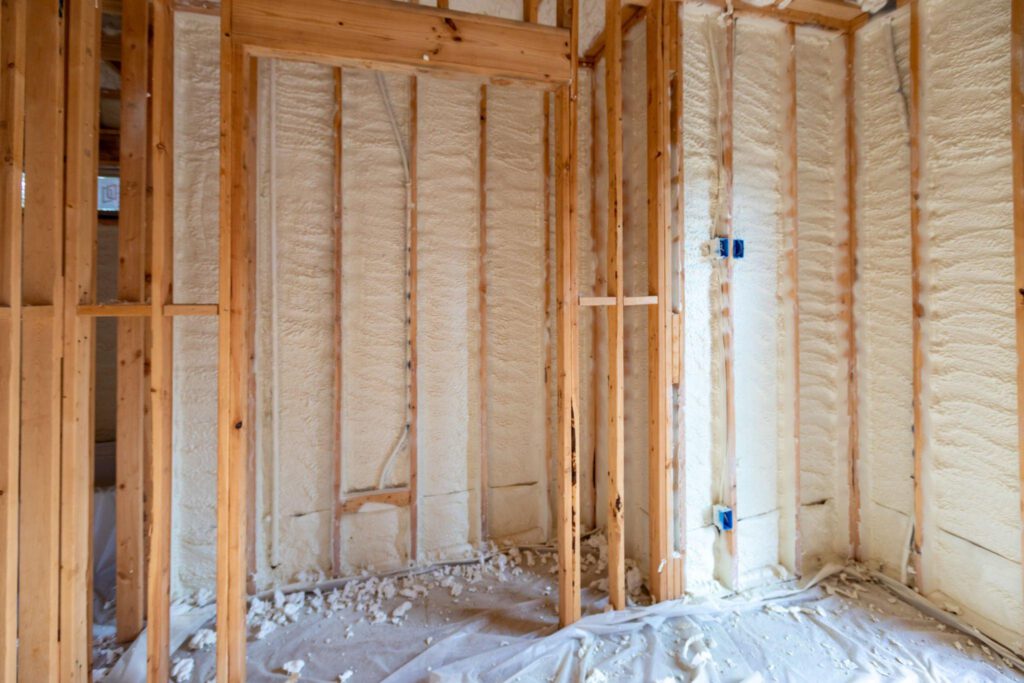When it comes to insulating your home, making the right choice can have a significant impact on energy efficiency, comfort, and cost savings. Two popular options that homeowners often consider are spray foam insulation and traditional insulation materials like fiberglass and cellulose. Each type has its unique properties and benefits, but which one emerges as the ultimate champion? In this blog, we’ll delve into the characteristics and advantages of both spray foam and traditional insulation to help you make an informed decision.
Installation Process
Traditional Insulation: Fiberglass and cellulose insulation typically come in batts, rolls, or loose-fill form. Installing these materials involves measuring, cutting, and fitting them into the designated areas manually. It’s a time-consuming process that may require professional assistance for optimal results.
Spray Foam Insulation: Spray foam, on the other hand, is applied as a liquid that expands to fill gaps and cavities. The installation process requires special equipment and skills, making it best left to experienced professionals. While it may be a bit more complex, spray foam offers excellent coverage and a seamless application.
Air Sealing
Traditional Insulation: Fiberglass and cellulose insulation provide thermal resistance but are not air-sealing materials. They may leave gaps and crevices through which air can pass, potentially leading to energy loss and decreased efficiency.
Spray Foam Insulation: Spray foam is well-known for its exceptional air-sealing capabilities. It expands to create a tight seal, preventing air infiltration and exfiltration. This airtight property not only enhances energy efficiency but also helps in keeping out dust, pollen, and other allergens.
R-Value
Traditional Insulation: The R-value is a measure of an insulation material’s resistance to heat flow. Traditional materials like fiberglass and cellulose have respectable R-values and provide adequate insulation in most situations.
Spray Foam Insulation: Spray foam has a higher R-value per inch compared to traditional insulation. This means it can provide superior insulation in a thinner layer, allowing for more design flexibility in construction projects.
Moisture Resistance
Traditional Insulation: Fiberglass and cellulose can absorb and retain moisture, potentially leading to mold and mildew growth if exposed to water leaks or condensation.
Spray Foam Insulation: Spray foam is impermeable to moisture, making it an effective moisture barrier. By limiting the presence of water and moisture, it helps in preventing mold and maintaining a healthier indoor environment.
Energy Efficiency
Traditional Insulation: When installed correctly, traditional insulation materials can contribute to improved energy efficiency by reducing heat transfer through walls, ceilings, and floors.
Spray Foam Insulation: Spray foam’s superior air-sealing and high R-value properties make it an excellent choice for achieving exceptional energy efficiency. By eliminating air leaks and minimizing thermal bridges, it can significantly reduce heating and cooling costs.
Eco-Friendliness
Traditional Insulation: Fiberglass and cellulose insulation are generally considered environmentally friendly, as they are made from recycled materials and can be recycled themselves.
Spray Foam Insulation: While spray foam is not made from natural materials, some eco-friendly formulations are available that use renewable resources. Additionally, the energy savings achieved through spray foam’s efficiency can contribute to a home’s overall sustainability.
Cost
Traditional Insulation: Fiberglass and cellulose insulation are often more budget-friendly compared to spray foam, especially when considering the material costs.
Spray Foam Insulation: Spray foam insulation typically has a higher upfront cost due to the specialized installation process and materials. However, the long-term energy savings and other benefits may outweigh the initial investment.
Conclusion
In the showdown between spray foam insulation and traditional insulation, both contenders have their merits. Traditional insulation materials are cost-effective and can provide satisfactory insulation. However, spray foam emerges as the ultimate champion in terms of energy efficiency, air sealing, and moisture resistance. While the upfront cost may be higher, its long-term benefits make it a worthy investment for homeowners looking to create a more comfortable, energy-efficient, and sustainable living space. When considering your insulation options, it’s essential to weigh the pros and cons of each and choose the one that aligns best with your budget, priorities, and long-term goals for your home.

